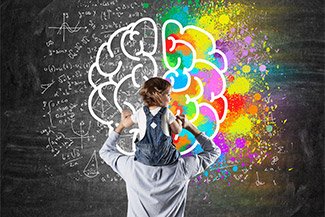Can the brains of adults and babies synchronize?
 In a previous article (Can we comfort others by simply holding their hands?), we saw that the brainwaves of two individuals can synchronize simply because they are near each other, regardless of whether or not they are touching. This new study conducted by researchers from Princeton University shows that adults and babies could also be on the same wavelength.
In a previous article (Can we comfort others by simply holding their hands?), we saw that the brainwaves of two individuals can synchronize simply because they are near each other, regardless of whether or not they are touching. This new study conducted by researchers from Princeton University shows that adults and babies could also be on the same wavelength.As the authors of this research point out, most of the earlier studies on so-called “neural coupling” were done with adults (for example, when watching movies together). Elise A. Piazza (from the Princeton Institute of Neuroscience) and her colleagues wanted to know more about how this neural synchronization develops beginning in the first years of life.
But how could they study real-time communication in such young participants? The researchers opted for a new naturalistic approach, with a sophisticated dual brain neuroimaging system to simultaneously record the brain activity of both babies and adults. The system uses functional near-infrared spectroscopy, which records oxygenation in the blood as an indicator of brain activity. The study’s little participants had to wear a trendy cap that recorded data from areas of the brain that are particularly involved in language processing.
The experimental protocol consisted of two phases. In the first phase, the adult interacted with each of the 18 babies (ages 9 to 15 months) for 5 minutes. The adult experimenter played, sang nursery rhymes, and read a book while the babies sat on their parents’ laps. In the other (control) phase of the experiment, the same adult stood aside and told a story to another adult, while the baby played with his or her parents.
The results showed evidence of neural coupling during the adult-baby interactions. The researchers found that during these times, the experimenter's brain was "coupled" with the child's in several high-level processing areas. Elise A. Piazza adds that, "While communicating, the adult and child seem to form a feedback loop. That is, the adult’s brain seemed to predict when the infants would smile, the infants’ brains anticipated when the adult would use more ‘baby talk,’ and both brains tracked joint eye contact and joint attention to toys." So when babies and adults play together, their brains influence each other in dynamic ways! When the two participants were separated (during the second part of the experiment), the coupling disappeared. The scientists were somewhat surprised to see that neural coupling was stronger in the prefrontal cortex (which is responsible for executive functions, including planning) since this area was previously thought to be relatively undeveloped in infants.
This research reinforces the idea that babies are not passive learners; on the contrary, they are actually quite dynamic, to the point of being able to “guide” their loved ones during direct interactions. The scientists are continuing their investigations to better understand the role of this neural synchronization in early language learning.
Source: Elise A. Piazza, Liat Hasenfratz, Uri Hasson, Casey Lew-Williams. “Infant and Adult Brains Are Coupled to the Dynamics of Natural Communication”, in Psychological Science, Dec. 2019 // Princeton University website: “Baby and adult brains ‘sync up’ during play, finds Princeton Baby Lab.” - https://www.princeton.edu/news/2020/01/09/baby-and-adult-brains-sync-during-play-finds-princeton-baby-lab







